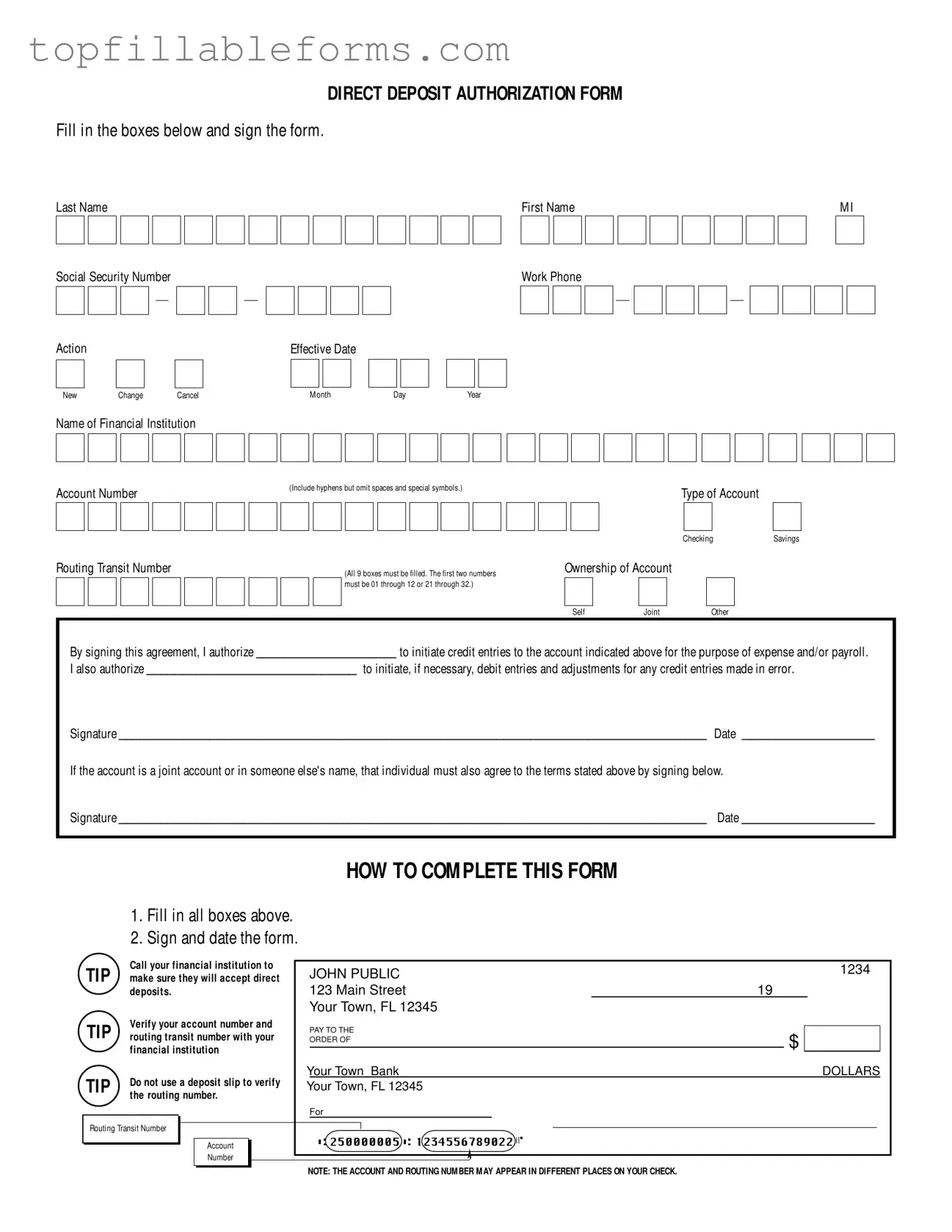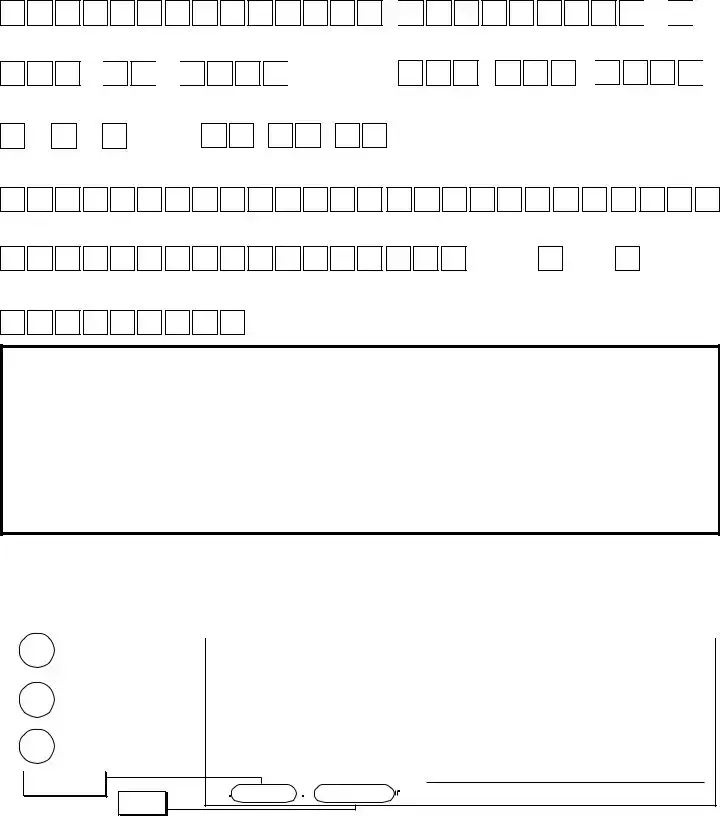DIRECT DEPOSIT AUTHORIZATION FORM
Fill in the boxes below and sign the form.
Last NameFirst NameM I
□□□□□□□□□□□□□□ □□□□□□□□□
 □
□

Social Security Number
□□□- □□
 - □□□□
- □□□□

Action |
□ □ |
Effective Date |
□New |
□□ □□ □□ |
|
ChangeCancel |
M onthDayYear |
Work Phone
□□□-□□□-□□□□

Name of Financial Institution
□□□□□□□□□□□□□□□□□□□□□□□□□□
Account Number |
(Include hyphens but omit spaces and special symbols.) |
Type of Account |
|
|
Savings |
|
|
Checking |
□□□□□□□□□□□□□□□□□ |
□ |
□ |
Routing Transit Number
□□□□□□□□□
(All 9 boxes must be filled. The first two numbers |
Ownership of Account |
|
|
|
|
|
|
must be 01 through 12 or 21 through 32.) |
|
|
|
|
|
|
|
|
|
|
|
|
Self |
Joint |
Other |
|
□ |
□ |
□ |
By signing this agreement, I authorize ____________________ to initiate credit entries to the account indicated above for the purpose of expense and/or payroll.
I also authorize ______________________________ to initiate, if necessary, debit entries and adjustments for any credit entries made in error.
Signature ____________________________________________________________________________________ Date ___________________
If the account is a joint account or in someone else's name, that individual must also agree to the terms stated above by signing below.
Signature ____________________________________________________________________________________ Date ___________________
HOW TO COM PLETE THIS FORM
1.Fill in all boxes above.
2.Sign and date the form.
|
TIP |
Call your financial institution to |
|
JOHN PUBLIC |
1234 |
|
|
make sure they will accept direct |
|
|
|
|
|
|
|
|
|
|
|
|
|
|
|
0 deposit s. |
|
123 MAIN STREET |
19 |
|
|
|
|
|
|
|
|
|
YOUR TOWN, FL 12345 |
|
|
|
|
|
|
TIP |
Verify your account number and |
|
PAY TO THE |
|
|
|
|
|
|
routing transit number with your |
|
ORDER OF |
|
|
|
|
|
0 financial institution |
|
|
|
|
$ |
|
|
|
|
|
|
|
|
|
YOUR TOWN BANK |
|
|
|
DOLLARS |
|
TIP |
Do not use a deposit slip to verify |
|
|
|
|
|
|
|
|
|
YOUR TOWN, FL 12345 |
|
|
|
|
|
|
|
|
|
|
|
|
|
|
0 the routing |
number. |
|
FOR |
|
|
|
|
|
|
|
|
|
|
|
|
|
|
|
|
|
IRouting Transit Number |
I |
|
➤ |
I |
Account |
l~::::::::,(~::250000005::)•:(~:=1234556789022~):..1·___________ J |
|
|
Number |
➤ |
NOTE: THE ACCOUNT AND ROUTING NUM BER M AY APPEAR IN DIFFERENT PLACES ON YOUR CHECK.



 □
□






